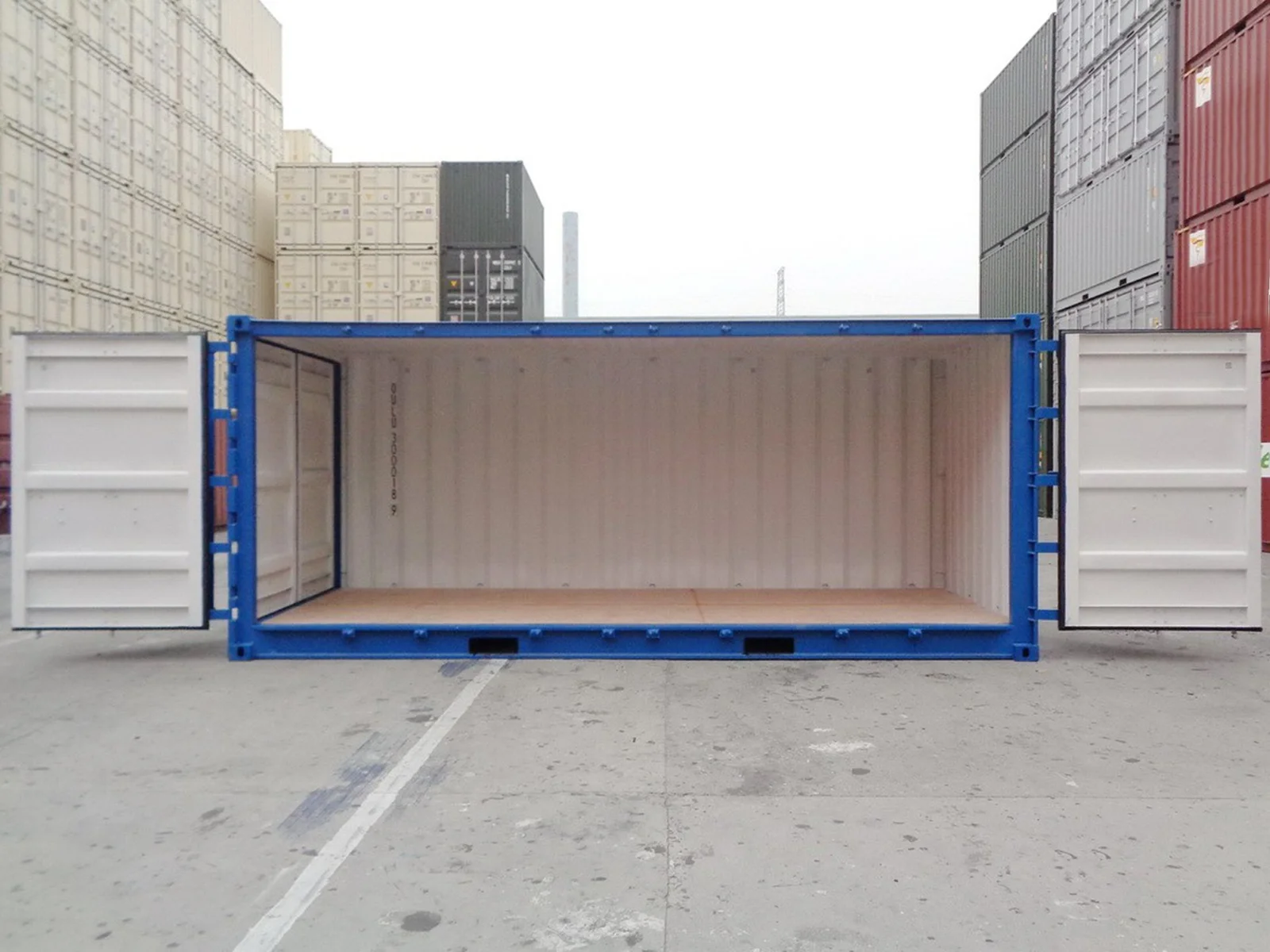Choosing the right size cargo container is important for a smooth and cost-effective shipping experience. An oversized container can lead to wasted space and unnecessary expense, while an undersized one can force you to use multiple containers, increasing your overall shipping cost.
With shipping containers for sale available in a wide range of sizes, from the standard 20-foot and 40-foot options to specialized high cube and refrigerated containers, it’s essential to understand how to properly estimate your needs to avoid overestimating or underestimating the required space.
Understanding Cargo Container Sizes
Cargo containers come in various standardized sizes, each catering to different shipment requirements.
The smallest option is the 10ft container, measuring 10 feet long, 8 feet wide, and 8 feet high, providing roughly 640 cubic feet of space. For larger shipments, 20ft containers are a popular choice. They provide 1,280 cubic feet of space with the same width and height as the 10ft container but double the length. They are also commonly transformed into office shipping containers.
If you need a bit more headroom for taller cargo without increasing the footprint, consider the 20ft High Cube container, which comes with an additional half foot of height for a total of 1,440 cubic feet. And for truly voluminous cargo, the 40ft High Cube container offers the most space — 3,130 cubic feet with extra headroom.
Assessing Your Cargo Needs
Estimating container size requires a thorough understanding of your cargo. Here are three key factors to consider:
- Volume of Cargo: To estimate cargo volume, measure each item’s dimensions (length, width, height). For many similar items, use a sample. For irregular shapes, imagine them as packed into a rectangular box. Consider packing efficiency, stacking potential, and additional space for packing materials like bubble wrap or peanuts.
- Weight of Cargo: Each container has a weight limit (usually in metric tons). Exceeding it causes safety hazards, delays, and fees. Weigh items, calculate total weight, and ensure it meets the container’s capacity.
- Type of Cargo: The shape and fragility of your cargo affect container choice. Standard shipping container for sale suit palletized goods, while high cube containers fit bulky or odd shapes.
Calculation and Estimation Techniques
Once you have a good grasp of your cargo’s volume and weight, it’s time to estimate the container size.
Volume Calculation:
- Use the formula: Volume (cubic feet) = Length (ft) x Width (ft) x Height (ft).
- Calculate the total volume of your cargo by adding the individual volumes of all your items.
Fill Rate:
Filling a container to 100% capacity is not recommended. Leave some buffer space for safe packing and potential weight fluctuations during transport. A typical “fill rate” is around 80%.
Estimating Container Needs:
- Divide your total cargo volume by the chosen container’s volume (considering the 80% fill rate).
- The resulting number represents the number of containers theoretically needed.
- Round this number up to the nearest whole number, as partial containers are not typically used.
- For example, if your total cargo volume is 2,000 cubic feet and you choose a 20ft standard container (approximately 1,280 cubic feet), the calculation would be: 2,000 cubic feet / (1,280 cubic feet x 0.8 fill rate) = 1.56
- Since partial containers are not practical, you would round up to 2, meaning you would need two 20ft containers for your cargo.
Additional Considerations
Other than size, there are additional factors to consider when choosing a container:
- Door Access Needs: If easy access to your cargo from the side is necessary for loading or unloading, consider containers with doors on one or both ends. These are also helpful for units turned into office shipping containers.
- Special Container Types: There are specialized container options for specific cargo needs. For example, temperature-controlled cargo like perishables requires refrigerated containers that maintain a constant cool temperature. Oversized or oddly shaped cargo might necessitate open-top containers with a removable top for easier loading or flat rack containers without walls and a roof.
The factors outlined above can help you accurately estimate the size of a cargo container that best suits your shipping needs. Remember, a little extra planning can save you money and ensure your cargo arrives safely and efficiently. Consulting with experienced shipping professionals is highly recommended for complex cargo requirements or oversized shipments.




